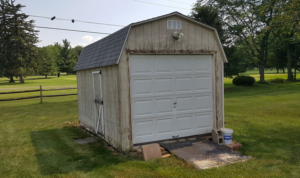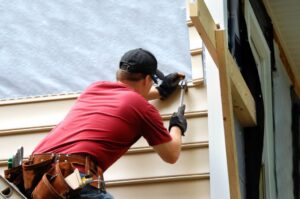Alpha Elite Contracting LLC provides companies access to talent without the cost and hassle of offering health insurance, 401k contributions, and three weeks of paid time off each year. However, contractors should be treated with respect, just like any employee.
Contracting is often used to reduce costs by weakening unions and eliminating civil service rules and protections. It is also prone to implementation problems that plague public sector delivery systems.

Contracting refers to the process of creating and executing a legal agreement. It involves several steps, from reviewing the terms and conditions to signing the contract. It also requires negotiation between the parties. The contracting process is important for businesses because it allows them to create an effective business strategy and maximize profits.
The definition of contracting can vary slightly, depending on the context in which it is used. The term may refer to several activities, including selling services or products and renting space in buildings or facilities. It can also refer to hiring employees or entering into other agreements. The act of contracting may require specific licensing or insurance.
A contractor is an independent professional specializing in a company’s particular task or project. They are typically paid hourly and do not receive benefits such as health insurance or holiday entitlements. Contractors are useful for companies needing expertise for a short-term period or projects with a set completion deadline.
There are several different types of contracts, including standard, performance, and fixed-price. Standard agreements are the most common and are based on mutual consent. Performance contracts are based on the mutual performance of specified tasks. Fixed-price contracts are based on the cost of performing specified work.
When contracting, it is important to include a definition of terms in the legal document. This will reduce the chance of misunderstandings and misinterpretations between the parties. The definition of terms should be clear and simple to understand.
Contracting is a popular career choice because it offers more flexibility than traditional employment. It is also a great way to gain experience in the industry you want to work in. Although many believe that contract positions are low-paying, they are increasingly offered in all sectors and can provide a significant income. Moreover, contract positions provide excellent experiences to highlight on a resume.
Signing a contract is one of the most crucial aspects of commercial engagements. This step cements contractual terms and legal obligations, establishing a legally recognized framework that addresses non-compliance issues. It also ensures clarity, commitment, and accountability among parties.
The contract signing process varies by the type of agreement and its complexity. For example, a simple service level agreement (SLA) may require less time for signing than a complicated outsourcing deal or software development project. A thorough contract should clearly outline all the relevant information, including delivery dates, payment terms, and responsibilities. It should also include specific dollar figures for remuneration, such as transaction prices, lease payments, or salaries.
Once the contract has been drafted and agreed upon, it must be signed by all the parties. This step marks a shift from negotiation to compliance, and all signatories must understand the legal implications of this transition.
Contract signing can take place either in person or online. In either case, all parties must be clear and calm when signing the contract. Any confusion or misunderstandings could lead to significant business consequences. Therefore, it’s best to have a lawyer review the contract before signing.
It’s also crucial to identify the signatories and their respective responsibilities. This can be done by checking official documentation, such as articles of incorporation or power of attorney. Furthermore, businesses should use a valid signing method in the contract’s jurisdiction. Additionally, they should consider whether their signing platform is mobile-friendly and easy to navigate for signatories.
Keeping a copy of the signed contract is also important. This will help companies to track progress and identify any potential problems. It will also save them valuable time by avoiding duplicate work. Ideally, this document should be securely stored so that it’s easily accessible for authorized parties and allows version control and audit trails. Having a central repository for all contracts will also help to streamline the contract management process and improve productivity.
Canceling a contract involves one or more parties agreeing to end the legal agreement. Sometimes, this is a mutual decision based on changing business needs or unforeseen circumstances. Cancellation can also occur due to a breach of contract by either party. A contract cancellation clause typically details how the canceled contract will be nullified and any penalties that may result from it.
Canceling contracts is a common occurrence in business, as well as in personal affairs. You can cancel a meeting you no longer want to attend or a subscription service you don’t use anymore. You can even cancel an order for postage stamps when you change your mind and don’t need the stamps anymore. However, the term is getting a new meaning with the rise of “canceling culture.” This trend has emerged as troubling information about public figures makes their fans want to withdraw support from them and stop supporting their work. This includes celebrities, politicians, and other figures who hold a public platform.
A contract can be canceled in several ways, including mutual or prior agreement, completion, or rescission. While the terms of a contract can be modified at any time, most often, they’re canceled when the original purpose no longer meets either party’s business goals or financial realities.
It is important to note that it can be difficult to cancel a contract legally without the other party’s consent, and in some cases, this is against the law. This is why it’s important to understand how to make an informed decision about which contractual agreements are best for your business and to communicate clearly with others regarding any changes in expectations or arrangements.
Even if your contract doesn’t stipulate that you must provide notice, a termination letter is a good idea for all types of contracts. You should always give a date when you plan to cancel and include your phone number so that the person can contact you in case of any issues. Always keep a copy of the letter for your records.
Many states require general contractors to have liability insurance to protect themselves and their clients against accidents or damages. Typically, clients, commercial landlords, and lenders will ask for proof of this insurance before hiring a contractor. It is also a good idea for any business to carry this type of coverage. Even if the odds of you having a claim are low, these policies can help you pay for any legal fees or settlements that may arise.
The types of insurance a general contractor needs will vary depending on the specifics of their industry and projects. Usually, these policies will include general liability, commercial auto, and workers’ compensation insurance. Other options include professional liability, pollution, environmental, business interruption, and inland marine coverage. In some cases, contractors may need to purchase a commercial umbrella policy to increase the limits of their other policies.
As a general contractor, you often have subcontractors working on your projects. These contractors are independent businesses that may or may not have their insurance coverage. To protect yourself against liability claims, you should also get a worker’s comp policy for your subcontractors. This will safeguard if a worker is injured on the job.
In addition to protecting yourself from third-party injuries and property damage, you should have a general liability policy covering false advertising, libel, and copyright infringement. If a client thinks you made a mistake in providing services, this type of insurance can help pay for legal fees and court settlements.
Lastly, any general contractor in New York should have a commercial auto policy to protect their vehicles. This covers the cost of any repairs or replacements to your cars, trucks, and vans related to work-related activities. It can also cover any lost income if your vehicle cannot be driven for some reason.
Some companies specializing in general contractors’ business insurance will offer customizable packages with affordable starting premiums. For example, Next Insurance offers a general contractor package that includes tools and equipment, commercial auto, builder’s builder’s risk insurance, and workers’ compensation. It also provides a variety of discounts, including a free online quote and application process.


